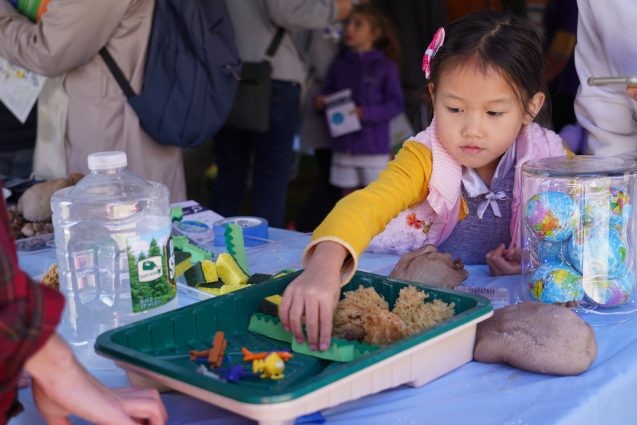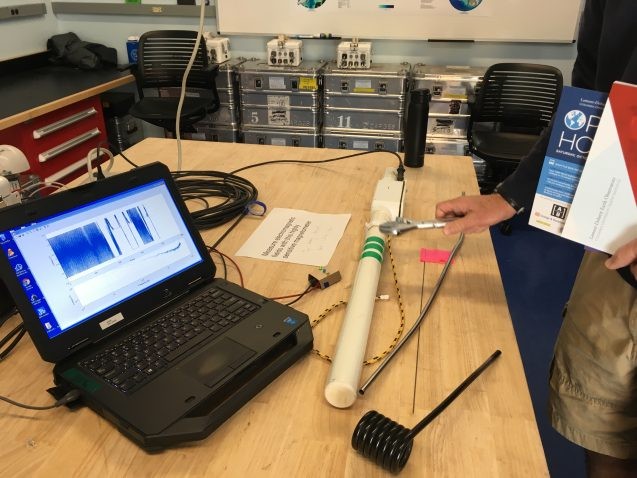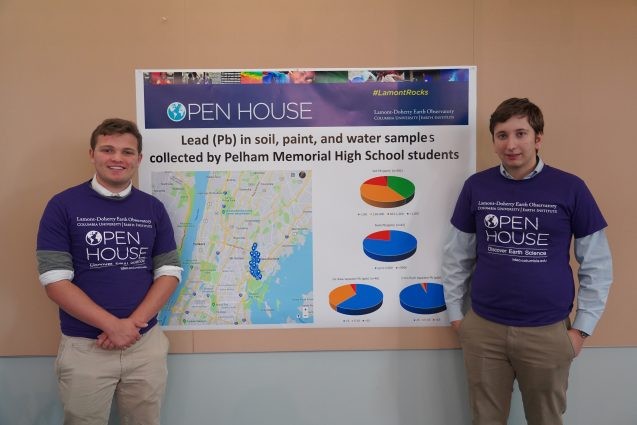Highlights from the 2019 Lamont Open House
This year’s Open House attracted more than 3,000 visitors and, just like research at Lamont, covered a vast range of subjects and regions, from under the sea to the surface of the moon.
On Saturday, October 5, Columbia University’s Lamont-Doherty Earth Observatory opened its doors to the public once again. Open House is a tradition that dates all the way back to 1949, allowing scientists at Lamont to share their research with the rest of the world via interactive, hands-on demonstrations and engaging talks. This year’s Open House attracted more than 3,000 visitors and, just like research at Lamont, covered a vast range of subjects and regions, from under the sea to the surface of the moon. Below you can see a few examples of all the fun we had.



All types of eruptions at Volcano World during the Lamont-Doherty open house. #LamontRocks pic.twitter.com/npY9XEKDZJ
— Brett Carr (@brettbcarr) October 5, 2019
The demonstration in the gif above shows the land deformations that can build up along subduction zones, where two tectonic plates collide and one sinks under the other. Lamont’s Mike Steckler, Leonardo Seeber, and Bar Oryan are part of a team that’s studying these processes in Bangladesh, to better understand the chances of a large earthquake striking in this densely populated region. Image: Bar Oryan



At Open House today: Our Adaptmap online mapper outlines #adaptation measures for #JamaicaBay; a 3-D topographical model brings the bay alive. #LamontRocks pic.twitter.com/gvikvdG40B
— CIESIN (@ciesin) October 5, 2019


Lab-mate Kailani has a very captive audience for measuring temperature and salinity in our #HudsonRiver exhibit at the Open House. #LamontRocks
🌍🌊😀 pic.twitter.com/byb3FEnrZR— Elise Myers (@elisemmyers) October 5, 2019


@jim_gaherty talking about earthquakes to a packed house. #lamontrocks @LamontEarth pic.twitter.com/z5LKvjd8M2
— Donna Shillington (@djshillington) October 5, 2019


Future scientists glued to glaciers on the goo flue with @goodnesglaciers and @Martin_Wearing at #lamontrocks’ open house 2019! pic.twitter.com/twnVFA6tVl
— Elizabeth Case (@elizabeth_case) October 6, 2019


Seismometers at @LamontEarth are sensitive enough to detect your footsteps next door. #LamontRocks https://t.co/b369Vf4PBp pic.twitter.com/xciTaGNm3Z
— Earth Institute (@earthinstitute) October 5, 2019




Lamont Open House was a blast!#LamontRocks pic.twitter.com/xY3SP0ui4e
— Kevin Uno (@kevin_t_uno) October 5, 2019
